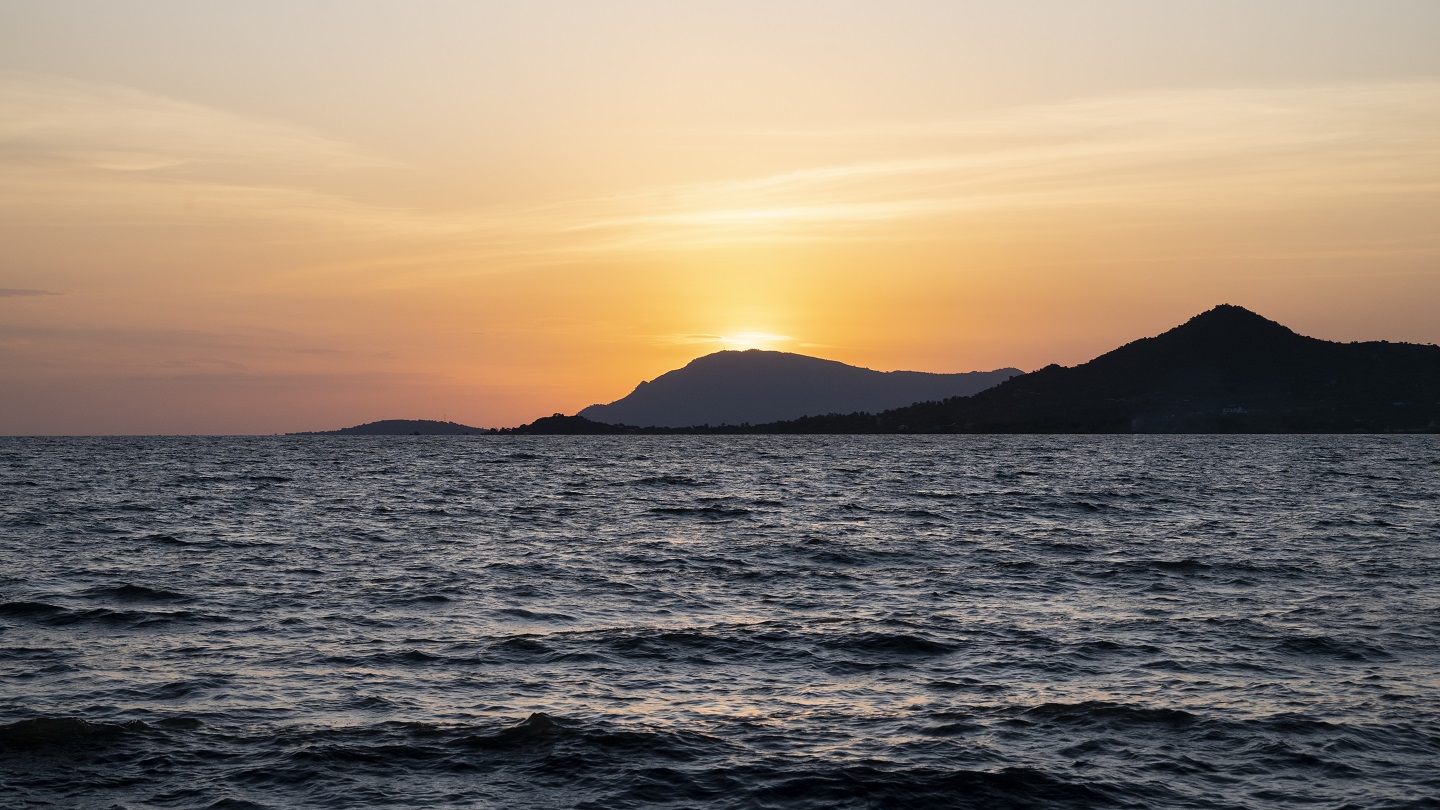Water Stewardship: Every Drop Counts
Catalonia, Spain: A place known for beautiful architecture, rich culture, and incredible food. Today, it is also a place where access to water is becoming an increasing challenge.
In 2020, the area declared a regional climate emergency. 2023 illustrates a Catalonia now suffering from a year long drought, record low water levels and staggering costs for the government.
At our production site at Sant Cugat – just 15 minutes north of Barcelona – the challenges of water scarcity are real.

Water issues have now reached the top of the agenda at our production site. “Sustainable water management is crucial. Not only for the environment, but also from a business standpoint,” says Dr. Vasileios Markantonis, Senior Manager for Water and Energy at Boehringer Ingelheim. “Secure access to clean water is vital for continued production, water plays such an important role both in the production of pharmaceuticals and the operating of the facilities. Without clean water, we cannot produce anything," says Dr. Markantonis.
From water crisis to water stewardship
Climate change is one cause of the increased water issues; floods are happening more often, droughts are lasting longer, affecting the environment as well as the lives of people and animals. “We all need to use water resources more sustainably,” explains Dr. Markantonis. “There is no other way. Even in places where we currently have enough water resources, water scarcity might hit in 30, 50 or 100 years. For some ground water reservoirs, it can take hundreds or thousands of years to regenerate.”
That is why we work actively to protect clean water and further reduce our water footprint in all communities where we operate. At Boehringer Ingelheim, we have further committed to 100% protection of clean water by mitigating pharmaceuticals in wastewater from production and combating antimicrobial resistance, as one part of our MORE GREEN program. “We look at water use holistically, recognize the problem and take action to be more responsible – considering the entire water use cycle from source to end,” Dr. Markantonis explains. This approach is known as water stewardship.
A holistic water management approach
We ensure proper water stewardship by becoming a member and following the standards of the reputable Alliance for Water Stewardship (AWS). AWS is currently the leading industry standard for water management in water scarcity areas and offers the only certification that considers the water usage on site and in entire catchment zone. In addition, the AWS advocates for collaboration between stakeholders, including government, industry, environmental organizations, and local communities.
“The AWS certification has been a gamechanger for water management, and we are already implementing the AWS Standard in production sites that are located in catchments with high water scarcity," says Dr. Markantonis.
Interesting to know: Essential principles of water management
One part of Water Stewardship is to improve water usage on site and implement water efficiency measures.
To do this, we use Life Cycle Assessments and Eco-Design.
- Life Cycle Assessments allows us to evaluate a product’s environmental impact throughout its life cycle, from the extraction of resources to disposal.
- Eco-Design helps us to develop products and operations that reduce, reuse, and recycle water resources and have the lowest possible environmental burden.
Mexico: Setting an example for the pharmaceutical industry

At our site in Xochimilco, Mexico, one can already recognize the effects of improved of water stewardship. Xochimilco is a wetland area with roots reaching back to the pre-Hispanic period and extraordinary biodiversity – but also plagued with pollution and unsustainable water usage. “As AWS opened up for pharmaceutical industry, it was an easy decision.” Marcela Gutierrez, EHS Manager at the Xochimilco site remembers. A decision which made the Xochimilco site become the first pharmaceutical production site in the world to receive an AWS certification, in 2019.
The implementation of the AWS standard led to improved water usage on site and the fostering of increased collaboration between stakeholders within the catchment basin. “We want to be a role model and show actors in the area that more sustainable behavior and AWS certification is possible,” Gutierrez adds with a smile.
California: Getting involved to tackle the omnipresent drought
3,000 kilometers further north-east, we find Shayla Bergeron, Senior Manager EHS at Boehringer Ingelheim’s production site in Fremont, California (U.S.). In the last decade, California has seen extensive droughts, record-low water levels, and reduced clean water access for almost one million people. “The situation is unsustainable, there are no easy or obvious solutions. But we know we need to step up and ensure we are part of that solution.” Shayla explains.
In 2022, the Fremont site became our second site to be granted an AWS certification. The implementation of the AWS Standard has benefited the site's water performance in various ways. By improving operational efficiency of the cooling tower, the site estimates a saving of more than 40,000 liters per day.
In addition to collaborating with local water authorities, the team is also engaging and educating the local communities through organized volunteer events. “Our goal is to reduce and streamline water usage, but also ignite meaningful conversations that can lead to positive change,” Bergeron adds.
Spain: Ongoing efforts to reduce our water footprint

Next up in line is Sant Cugat, Spain. Following the water challenges in the last years, the production site in Sant Cugat, has already managed to cut water usage by 16.8% since the beginning of 2023, to support anti-drought measures, and they are far from done.
“By following the AWS principles, we see the potential to support a more sustainable development in the whole catchment area and make us more resilient for the future,”says Monika Sanchez, Head of EHS&S at the Sant Cugat production site.
To date, five of our production sites are located in areas with high water risk: Xochimilco in Mexico and Fremont in the U.S., but also Sant Cugat (Spain), Korpoi (Greece) and Shanghai (China). At Boehringer Ingelheim, we are currently working on having them all AWS certified by 2030.
“In addition, we are continuously evaluating the water risk at all our sites”, Dr. Markantonis adds: “Even if things are currently under control, there is always potential for water risks in the future.”
Links
Alliance for Water Stewardship (AWS)

Imagine: our sustainability story hub
Downloads

MORE GREEN at a glance
Related Content


